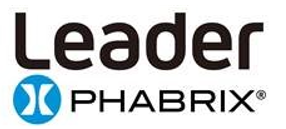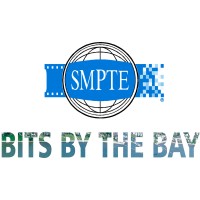When: May 22, 2024 at 2:00 PM
Where: National Geographic Headquarters - Register Here
Address: 1145 17th St NW
Washington, DC 20036 United States
Sponsor: Leader Phabrix
After a long hiatus, Bits By the Bay, the Washington area technical conference for broadcast and production professionals, is returning for 2024 in a one-day form factor (aiming for a return to the full conference in 2025). Jointly organized by the DC SMPTE Section and SBE Chapter 37, the event will run from 2pm to 9pm, including dinner, and will feature three technical topics with multiple expert presenters.
The hybrid meeting will be held at National Geographic in downtown DC (Dupont Circle and Farragut North Metro). and is limited to 50 people in person. Attendance via Zoom is also available. Please register via the Zoom link for both virtual and in-person attendance. Presenters include Merrill Weiss, James Snyder, Renard Jenkins, Joe Castellano, Steve Holmes, Dan White, Mike Palmer, and other - stay tuned for further details!
https://us06web.zoom.us/meeting/register/tZ0tce-rpjkoGNb1r7Xd9dZhx3z-_Jvdz62s
PROGRAM SUMMARY
1) Ending Fractional Frame Rates and Interlace Part Two: The Education Continues
In the U.S. we have been living with the 29.97fps video frame rate since the advent of color in 1953. This legacy of NTSC analog television is so deeply ingrained in all aspects of broadcast and production that it's often forgotten or taken for granted. Some equipment and production software may not even provide an option to use integer (30/60) rates for recording or display.
There are many factors behind the continued use of fractional frame rates (as well as interlaced video), but most have become irrelevant over time. This session will review and continue the discussion of the problems created by these legacy concepts, and how they might finally be eliminated.
2) An Emerging Technical Standard to Protect Against AI Fakes: C2PA
C2PA is an open technical standard providing publishers, creators, and consumers the ability to trace the origin of different types of media. It provides the technical means to declare where media was captured, by whom, by what device, geolocation information from the point of capture, and any production or distribution processes that may have been applied. C2PA allows producers to lay claim to their video in a way that cannot be faked or modified. This not only protects their brand against AI fakes, but also allows them to better manage and monetize their own content and archives.
Technically, C2PA defines a schema for describing provenance and specific assertions of fact. It allows this description to be digitally signed and locked to the media file through the use of certificates and a hierarchy of certificate authorities – very similar to how internet domains are protected today by certificates.
3) Day-to-Day Operation in the Hybrid World of SDI and SMPTE 2110
This session walks through a typical day in the life of an engineer in managing quality and reliability in a hybrid SDI/2110 facility, which is where most of us will be the next few years. IP is just another I/O interface: It’s a way to get video, audio, and data to or from a switch. These presentations will discuss what operators and engineers need to know.

